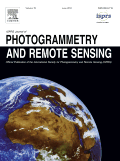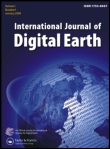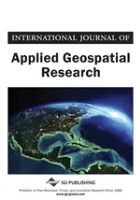
GIM International-The Worldwide Magazine for Geomatics
Scope & Guideline
Shaping the Landscape of Environmental Science and Engineering
Introduction
Aims and Scopes
- Geospatial Technology Applications:
The journal emphasizes the application of cutting-edge geospatial technologies, including remote sensing, GIS, and LiDAR, in various domains such as urban planning, environmental management, and disaster response. - Sustainable Development and Climate Change:
A core focus is on how geomatics can contribute to sustainability and climate change initiatives, showcasing research that leverages geospatial data to address environmental challenges. - Education and Capacity Building:
The journal highlights the importance of education in the geomatics field, discussing strategies to attract and develop new talent while addressing the skills gap within the industry. - Digital Twins and Smart Cities:
Research related to digital twins and their application in smart city initiatives is a significant area of interest, reflecting the trend towards urban digitalization and data-driven decision-making. - Interdisciplinary Collaboration:
GIM International promotes interdisciplinary approaches, encouraging collaboration between geospatial professionals and experts from other fields to tackle complex societal issues.
Trending and Emerging
- Artificial Intelligence and Machine Learning:
There is a growing emphasis on the integration of AI and machine learning in geospatial data analysis, highlighting their potential to enhance data processing and decision-making capabilities. - Environmental Monitoring and Management:
Increasing attention is being paid to using geospatial technologies for environmental monitoring, particularly in relation to climate change, resource management, and ecological studies. - 3D Visualization and Digital Twins:
The trend towards 3D visualization and the development of digital twins is gaining momentum, showcasing their importance in urban planning, infrastructure management, and real-time monitoring. - Remote Sensing Innovations:
Recent articles reflect a surge in interest in innovative remote sensing techniques, particularly those that utilize UAVs and advanced imaging technologies for diverse applications. - Community Engagement and Public Participation:
Emerging research emphasizes the role of geospatial professionals in community engagement and participatory mapping, underscoring the importance of local knowledge in spatial planning.
Declining or Waning
- Traditional Surveying Methods:
There is a noticeable reduction in publications centered around conventional surveying techniques, as the industry increasingly embraces advanced technologies such as UAVs and digital mapping solutions. - Basic Geographic Information Systems (GIS):
Publications focusing on basic GIS concepts and applications have decreased, suggesting a shift towards more complex and integrated geospatial solutions that require advanced technical skills. - Geodetic Control Networks:
Research related to traditional geodetic control networks is becoming less frequent, likely due to advancements in satellite positioning and GNSS technology that offer more efficient alternatives. - Land Administration Systems:
There appears to be a decline in articles specifically discussing traditional land administration systems, as the focus shifts towards innovative digital solutions and integrated land management practices. - Paper-based Mapping Solutions:
The relevance of paper-based mapping solutions is diminishing, reflecting the industry’s move towards digital formats and interactive mapping technologies.
Similar Journals

Boletin Geografico
Bridging Disciplines Through Geographical InsightsBoletin Geografico is a distinguished open-access journal published by the Universidad Nacional del Comahue, Department of Geography, promoting the dissemination of high-quality research in the field of geography. Since its inception in 1992, this journal has aimed to foster an interdisciplinary dialogue among scholars, practitioners, and students, providing insights into diverse geographical phenomena and their socio-environmental contexts. With its ISSN 0326-1735 and E-ISSN 2313-903X, the journal offers a rich repository of knowledge, accessible to a global audience, thereby enhancing visibility and impact. By promoting rigorous scientific inquiry and empirical analysis, Boletin Geografico serves as a vital platform for contributing to innovative geographical scholarship and engaging with contemporary issues, making it an essential resource for those invested in understanding the dynamic interplay of human and physical geography.

Quaestiones Geographicae
Advancing Earth Sciences Through Open DialogueQuaestiones Geographicae, an esteemed open-access journal published by SCIENDO, serves as a vital platform for scholarly communication in the field of Earth and Planetary Sciences. Since its inception in 1979, the journal has been dedicated to promoting rigorous research and discourse in geography, encompassing a breadth of topics that reflect the dynamic nature of the discipline. With an impressive Impact Factor belonging to the Q3 quartile category, the journal actively contributes to the global scientific community's understanding of geographical phenomena. Its commitment to open-access publishing since 2010 ensures that groundbreaking research is accessible to a wider audience, facilitating collaboration and innovation. As part of its enduring legacy, Quaestiones Geographicae engages researchers, professionals, and students alike, inviting them to explore, share, and expand the boundaries of geographical knowledge.

Geofocus-Revista Internacional de Ciencia y TecnologIa de la InformaciOn GeogrAfica
Innovating Geography: Bridging Research and Real-World ImpactGeofocus-Revista Internacional de Ciencia y Tecnologia de la Informacion Geografica is a pioneering open-access journal published by the Asociación Española de Geografía, dedicated to advancing knowledge in the fields of Geography and Environmental Science. Established in 2001, this journal serves as a vital platform for researchers, scholars, and professionals to disseminate their findings in areas such as Environmental Engineering, Geography, Planning and Development, and Nature and Landscape Conservation. Despite its current categorization in Q4 across multiple quartiles, Geofocus aims to deepen understanding and stimulate dialogue on pressing geographic and environmental issues, offering a unique collection of interdisciplinary research contributions. Encompassing a diverse range of topics, the journal encourages innovative approaches to geographic challenges, making it essential for those passionate about geography and environmental management. With its commitment to open access, Geofocus ensures that valuable research is accessible to a global audience, further enhancing its impact in the academic community.

ISPRS JOURNAL OF PHOTOGRAMMETRY AND REMOTE SENSING
Shaping the Future of Photogrammetry and Remote SensingISPRS Journal of Photogrammetry and Remote Sensing is a prestigious publication at the forefront of the fields of photogrammetry and remote sensing. Established in 1989 and published by Elsevier, this journal has consistently maintained a strong academic standing, currently holding a top-tier Q1 ranking across multiple categories, including Atomic and Molecular Physics, Computer Science Applications, and Engineering. This reflects its vital contribution to advancing knowledge and technology in these dynamic fields. The journal is not only a vital resource for researchers and professionals but also serves as an essential academic platform for students keen on delving into the latest developments in geospatial sciences. The journal operates under a non-open access model, ensuring that submitted research adheres to the highest standards of scholarly communication and integrity. With an impactful focus, it brings innovative research, comprehensive reviews, and significant case studies to a global audience. The ISPRS Journal is crucial for those aiming to enhance their understanding and application of remote sensing techniques within various scientific disciplines.

Revue Internationale de Geomatique
Exploring Interdisciplinary Insights in GeomaticsRevue Internationale de Geomatique (ISSN: 1260-5875, E-ISSN: 2116-7060) is a prestigious journal published by TECH SCIENCE PRESS, dedicated to advancing the field of geomatics. This journal serves as a vital platform for disseminating significant research findings, cutting-edge methodologies, and innovative applications within the realm of spatial data and technology. With an emphasis on interdisciplinary studies, it fosters collaboration among researchers, professionals, and students across various domains, including environmental science, urban planning, and geographic information systems (GIS). Although not an open-access journal, Revue Internationale de Geomatique maintains a rigorous peer-review process ensuring the publication of high-quality articles that contribute to the evolving landscape of geomatics. Given its relevance and commitment to scholarly excellence, this journal is a crucial resource for advancing knowledge and practices in the ever-growing field of spatial information science.

GEOJOURNAL
Connecting Researchers to Contemporary Geographic ChallengesGEOJOURNAL, published by SPRINGER, is a distinguished academic journal that occupies a pivotal role in the fields of geography, planning, and development. With a robust ISSN of 0343-2521 and an E-ISSN of 1572-9893, it has been a cornerstone of scholarly communication since its inception in 1977. Operating from the Netherlands, GEOJOURNAL offers insightful research articles that delve into the dynamics of spatial analysis, environmental management, urban studies, and regional development, thus catering to a diverse readership of researchers, professionals, and students alike. The journal boasts an impressive Scopus ranking of #176 out of 821 in its category, positioning it in the top 22% percentile while maintaining a Q2 quartile ranking in Geography, Planning, and Development as of 2023. With access options available, GEOJOURNAL remains a vital platform for disseminating cutting-edge research and fostering academic collaboration, indispensable for those engaging with contemporary geographic challenges and innovative solutions. Engage with GEOJOURNAL to enrich your understanding and contribute to critical discussions in this ever-evolving field.

International Journal of Digital Earth
Unveiling the future of geoscience through digital exploration.Welcome to the International Journal of Digital Earth, a premier open-access journal published by Taylor & Francis Ltd, dedicated to advancing the field of digital geoscience. With its ISSN 1753-8947 and E-ISSN 1753-8955, this journal has established itself as a vital resource for scholars and practitioners alike since its inception in 2008. The journal is at the forefront of interdisciplinary research, showcasing a diverse scope from Earth sciences to computer science applications, evidenced by its impressive ranking in the 2023 Scopus database. It holds a Q1 categorization in Earth and Planetary Sciences, with a percentile rank among the top 16% of its peers, and also stands out in the Q2 quartile for both Computer Science Applications and Software disciplines. The journal's commitment to open access, established in 2022, underscores its dedication to disseminating knowledge and fostering collaboration. By providing a platform for high-quality research, the International Journal of Digital Earth plays a critical role in addressing the complexities of our changing planet through innovative digital solutions. Whether you are an experienced researcher or a student, this journal is an essential addition to your academic toolkit.

International Journal of Applied Geospatial Research
Driving insights in Earth and planetary sciences.International Journal of Applied Geospatial Research is an esteemed publication dedicated to advancing the field of geospatial research. Published by IGI Global, this journal provides a platform for innovative studies from 2010 to 2024 that encourage multidisciplinary contributions across Earth and planetary sciences and geography. While currently not offering open access, the journal's focus on applied research ensures that it remains highly relevant to both academics and industry professionals alike. With an ISSN of 1947-9654 and an E-ISSN of 1947-9662, it has been indexed in various databases, reflecting its emerging significance with rankings such as Q4 in Earth and Planetary Sciences and Geography according to Scopus, placing it at the intersection of critical research and practical application. Researchers, professionals, and students can expect insightful articles that enhance understanding and drive innovation in geospatial applications essential for informed decision-making in a rapidly changing world.

Geo-Spatial Information Science
Advancing the Frontiers of Geo-Spatial ResearchGeo-Spatial Information Science, published by TAYLOR & FRANCIS LTD, is a premier open-access journal that has been at the forefront of disseminating cutting-edge research since its inception in 1998. With an ISSN of 1009-5020 and an E-ISSN of 1993-5153, this journal plays a pivotal role in the fields of Computers in Earth Sciences and Geography, Planning and Development, achieving a prestigious Q1 ranking in both categories as of 2023. Its exemplary Scopus rankings highlight its relevance within the social sciences and earth sciences, placing it among the top echelons of its field, with a 95th and 93rd percentile respectively. The journal aims to bridge the gap between innovative geospatial technologies and their applications in real-world scenarios, fostering interdisciplinary collaboration and advancing the global understanding of spatial data analysis. Based in the United Kingdom, Geo-Spatial Information Science invites researchers, professionals, and students to contribute and access research that shapes the future of geo-spatial sciences, all while adhering to open access principles that ensure broad dissemination and engagement with the broader academic community.

GeoMedia
Fostering Interdisciplinary Dialogue in GeoMedia StudiesGeoMedia, with ISSN 1128-8132, is a prominent peer-reviewed journal published by MEDIAGEO SCIENCE & TECHNOLOGY PUBLISHING, specializing in the interdisciplinary field of geographical information and media studies. Since its inception in 2005, the journal has embraced an Open Access model, ensuring that cutting-edge research remains accessible to a global audience. Based in Rome, Italy, GeoMedia aims to bridge the gap between geographic data and its applications in media, technology, and societal contexts, fostering innovative research that impacts both academia and industry. With a commitment to contributing to the advancement of knowledge, it encourages submissions that explore theoretical frameworks, case studies, and empirical investigations showcasing the multifaceted relationship between geography and media. GeoMedia stands as a vital resource for researchers, professionals, and students who are keen on exploring the dynamic interplay between geographical phenomena and media technologies.